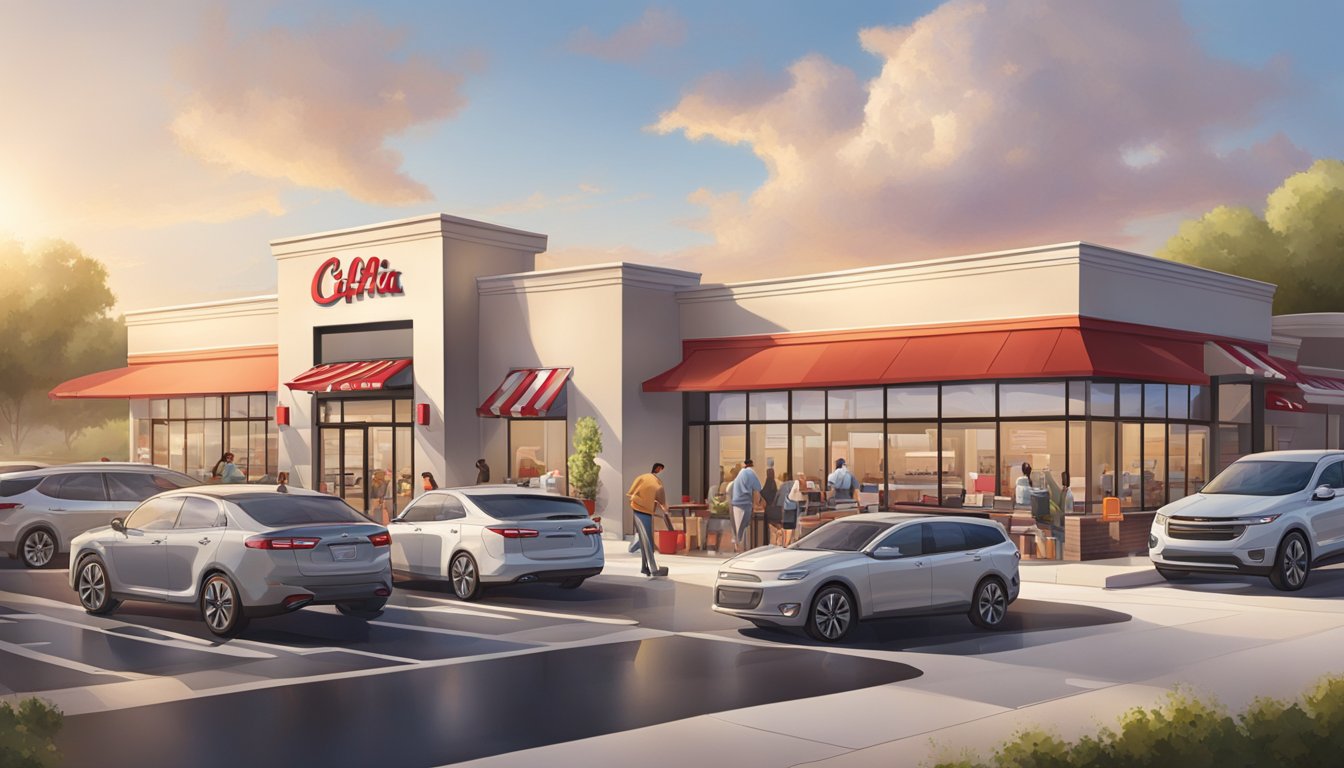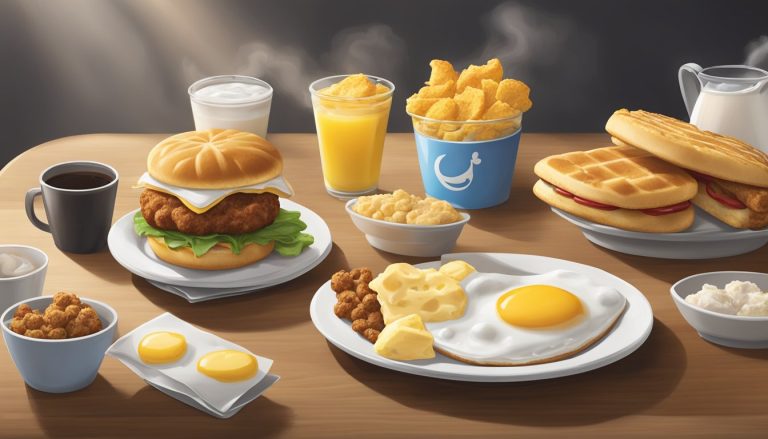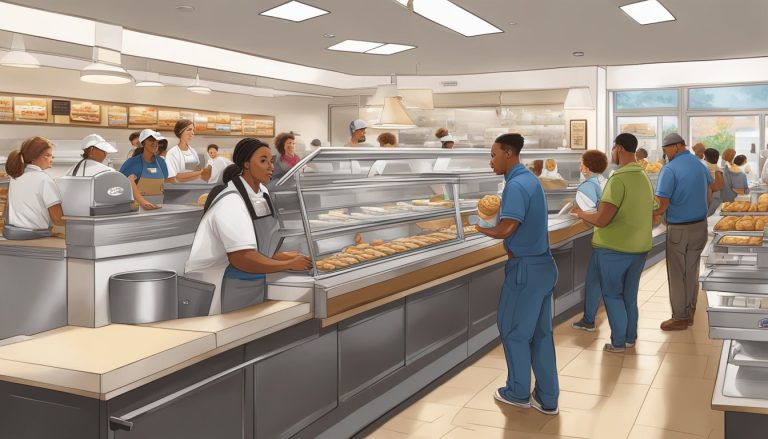The fast-food breakfast landscape is evolving rapidly, with chains vying for a larger slice of the morning market. Chick-fil-A has emerged as a frontrunner in this space, setting new standards for quality and efficiency. The company’s dedication to freshly prepared items and exceptional service has positioned it as a model for others in the industry to follow.
Chick-fil-A’s approach to breakfast involves meticulous preparation and attention to detail. Team members arrive before dawn to hand-roll biscuits, ensuring customers receive freshly baked goods throughout the morning. This commitment to quality extends beyond their signature chicken offerings, demonstrating the chain’s versatility in menu options.
As the fast-food industry looks to the future, Chick-fil-A’s expansion plans and focus on breakfast provide valuable insights. The chain’s success in attracting customers for morning meals, despite being known primarily for lunch and dinner, showcases the potential for growth in the breakfast segment. Other fast-food chains may need to reassess their breakfast strategies to compete effectively in this increasingly important market.
Evolution of Fast-Food Breakfast

Fast-food breakfast has transformed dramatically since its inception, with chains innovating to meet changing consumer demands and preferences. Menu items have evolved from simple sandwiches to diverse offerings catering to various tastes and dietary needs.
Historical Perspective
McDonald’s pioneered fast-food breakfast in the 1970s with the introduction of the Egg McMuffin. This move sparked a breakfast revolution in the industry. Other chains quickly followed suit, recognizing the potential of the morning meal market. By the 1980s and 1990s, fast-food breakfast had become a significant revenue stream for many restaurants.
Burger King, Wendy’s, and Taco Bell joined the breakfast bandwagon, expanding their menus to include morning fare. The popularity of these offerings continued to rise, with McDonald’s alone generating $5 billion annually from breakfast sales by the 1990s.
Breakfast Menu Innovation
Fast-food chains have continuously innovated their breakfast menus to stay competitive. McDonald’s introduced biscuit sandwiches in 1986 and breakfast burritos in 1991. The McGriddle, launched in 2003, combined sweet and savory flavors in a unique sandwich.
Other chains developed their own signature items. Restaurants began offering healthier options like oatmeal and fruit cups to cater to health-conscious consumers. Egg white options became popular, with McDonald’s introducing the Egg White Delight McMuffin in 2013.
Menu innovation has also focused on convenience, with portable items like breakfast burritos and handheld sandwiches gaining popularity.
Chick-fil-A’s Breakfast Journey
Chick-fil-A entered the breakfast market with a focus on chicken-based offerings. Their signature Chicken Biscuit became a morning staple for many customers. The chain has since expanded its breakfast menu to include a variety of options.
The Egg White Grill, introduced as a healthier alternative, features grilled chicken and egg whites on an English muffin. Chick-fil-A also offers Chick-n-Minis, bite-sized chicken nuggets served in yeast rolls.
To cater to health-conscious customers, Chick-fil-A includes options like the Greek Yogurt Parfait and Fruit Cup. The chain continues to innovate, balancing its chicken-focused menu with items that appeal to diverse customer preferences.
The Fast-Food Industry Landscape

The fast-food industry continues to evolve, shaped by fierce competition and changing consumer preferences. Key players adapt their strategies to meet new demands while maintaining efficiency and quality.
Competitive Analysis
McDonald’s remains the industry leader, with over 39,000 locations worldwide. Chick-fil-A has seen significant growth, ranking third in U.S. sales despite having fewer locations than competitors. Taco Bell holds the fourth spot, with 7,405 restaurants generating $15 billion in annual sales.
Drive-thrus have become a crucial battleground. Chick-fil-A excels with an average wait time of 4.5 minutes, outpacing the industry average of 6.7 minutes. This efficiency has contributed to their high customer satisfaction ratings.
Quick-service restaurants are investing heavily in technology. Many chains are implementing AI-powered ordering systems and mobile apps to streamline operations and enhance customer experience.
Consumer Trends and Preferences
Health-conscious choices are gaining traction. Consumers are seeking more nutritious options, prompting chains to expand their menus with salads, grilled items, and plant-based alternatives.
Convenience remains paramount. 45% of weekly fast-food consumers visit at least once, highlighting the importance of accessibility and quick service.
Demographic shifts are reshaping the market:
- Ages 20-39 represent 44.9% of fast-food consumers
- Women now spend 33% more on dining out than men
Digital ordering and delivery have surged in popularity. Chains like Shake Shack are investing millions in digital infrastructure to meet this demand.
Cost pressures are influencing consumer behavior. With food-away-from-home inflation outpacing grocery prices, 57.7% of consumers plan to cook more meals at home.
Technological Advancements in Service
Chick-fil-A has embraced cutting-edge technologies to enhance its breakfast service. These innovations focus on improving efficiency and customer experience through digital ordering systems and innovative pickup options.
Digital Ordering Systems
Chick-fil-A’s digital ordering platforms have revolutionized the breakfast rush. The company’s mobile app allows customers to place orders in advance, reducing wait times significantly. Self-service kiosks in restaurants provide another quick ordering option, especially beneficial during peak hours.
These systems use data analytics to predict popular items and streamline kitchen operations. This approach has improved order accuracy and reduced food waste. The digital interface also makes it easier for customers to customize their meals, enhancing satisfaction.
Chick-fil-A’s investment in these technologies has paid off. Locations using these systems report higher customer throughput and increased sales during breakfast hours.
Curbside Pickup and Drive-Through Innovations
Curbside pickup has become a game-changer for Chick-fil-A’s breakfast service. Customers can order via the app and have their food brought directly to their vehicle. This method has proven particularly popular with parents and commuters.
Drive-through operations have also seen significant improvements. Many locations now feature multiple lanes with dedicated staff using tablets to take orders. This approach has cut wait times by up to 50% at some restaurants.
Chick-fil-A has tested AI-powered voice ordering systems in drive-throughs in select markets, including Chicago. These systems can handle complex orders and upsell with remarkable accuracy. Early results show increased order sizes and faster service times.
Critical Role of Customer Experience

Customer experience has become a key differentiator in the fast-food industry. Chick-fil-A’s success stems largely from its focus on delivering exceptional service and personalized interactions.
Hospitality and Service Differentiation
Chick-fil-A’s reputation for outstanding customer service sets it apart from competitors. The company’s employees are known for their polite demeanor and attentiveness. They use phrases like “my pleasure” instead of “you’re welcome,” creating a more upscale feel.
In the drive-thru, Chick-fil-A staff often brave the elements to take orders face-to-face. This personal touch reduces errors and speeds up service. The chain’s innovative dual drive-thru lanes and outdoor order-taking tablets further minimize wait times.
Chick-fil-A invests heavily in employee training, ensuring consistent service quality across locations. This commitment fosters pride among staff and attracts high-caliber applicants.
Personalization and Customer Engagement
Chick-fil-A leverages technology to enhance personalization. Their mobile app allows customers to save favorite orders and earn rewards. The chain also uses data analytics to tailor promotions and menu offerings to individual preferences.
In-store, employees are encouraged to engage with guests beyond basic transactions. They might offer a free dessert for a customer’s birthday or remember a regular’s usual order. These small gestures create memorable experiences that drive loyalty.
Chick-fil-A actively seeks customer feedback through surveys and social media. They use this input to continuously refine their menu and service processes. This responsiveness demonstrates the company’s commitment to meeting evolving customer needs.
Nutritional Considerations

Fast-food breakfast options are evolving to meet consumer demands for healthier choices. Chick-fil-A has adapted its menu to provide nutritious alternatives while maintaining flavor and convenience.
Health-Conscious Menu Options
Chick-fil-A’s breakfast menu features several health-conscious items. The Egg White Grill stands out as a protein-packed option, containing 27 grams of protein and only 300 calories. This sandwich combines grilled chicken, egg whites, and cheese on an English muffin.
For those seeking lighter fare, Chick-fil-A offers Greek yogurt parfaits with granola and fresh fruit. These parfaits provide calcium, protein, and essential vitamins while satisfying sweet cravings.
The Hash Brown Scramble Bowl with Grilled Chicken is another nutritious choice. It combines scrambled eggs, grilled chicken, and hash browns for a filling meal rich in protein and complex carbohydrates.
Addressing Dietary Restrictions and Preferences
Chick-fil-A has expanded its menu to accommodate various dietary needs. For gluten-sensitive customers, the chain offers a gluten-free bun option for breakfast sandwiches.
Vegetarian options include the Fruit Cup, which provides essential vitamins and fiber. The Sunflower Multigrain Bagel serves as a plant-based alternative for those avoiding meat products.
Chick-fil-A also caters to calorie-conscious diners by offering smaller portion sizes and providing detailed nutritional information for all menu items. This transparency allows customers to make informed choices based on their dietary goals and restrictions.
Future Outlook

Fast-food breakfast is poised for significant changes in the coming years. Innovation will drive new menu offerings, service models, and technologies to meet evolving consumer preferences and lifestyles.
Predictions for Fast-Food Breakfast Trends
Plant-based options are expected to gain prominence on breakfast menus. More chains will likely introduce meat alternatives and dairy-free choices to cater to health-conscious and environmentally-aware customers.
Customization will become increasingly important. Restaurants may adopt build-your-own breakfast models, allowing customers to mix and match ingredients for personalized meals.
Digital ordering and delivery will continue to grow. Mobile apps and third-party delivery services will play a larger role in how customers order and receive their breakfast.
Grab-and-go items are anticipated to expand. Portable, convenient options will cater to busy lifestyles and changing work patterns.
Chick-fil-A’s Strategic Vision
Chick-fil-A aims to reach 4,000 locations by 2030, indicating aggressive expansion plans. The company is focusing on innovative store designs to improve efficiency and customer experience.
New prototypes feature kitchens above drive-thru lanes, using chutes to deliver food to pickup windows. This design could revolutionize drive-thru service, reducing wait times and increasing capacity.
Chick-fil-A is exploring off-premise dining options. The company has tested dedicated delivery and catering locations, recognizing the growing importance of these channels.
Meal kit services are another area of experimentation for Chick-fil-A. This move could help the brand extend its reach into customers’ homes beyond traditional restaurant visits.
Conclusion

Chick-fil-A’s approach to fast-food breakfast offers valuable insights for the industry’s future. The company’s focus on customer experience has set a new standard for service quality and efficiency.
Innovation remains a key driver of Chick-fil-A’s success. Their continuous improvements in menu offerings and operational processes demonstrate the importance of adapting to changing consumer preferences.
The company’s strategic use of technology, from mobile ordering to drive-thru optimization, highlights the growing role of digital solutions in enhancing convenience and speed of service.
Chick-fil-A’s commitment to quality ingredients and freshly prepared food aligns with increasing consumer demand for healthier fast-food options. This trend is likely to shape breakfast offerings across the industry.
As competitors take note, Chick-fil-A’s strategies may influence broader changes in fast-food breakfast. The emphasis on personalized service, efficient operations, and menu innovation could become industry benchmarks.
Ultimately, Chick-fil-A’s success underscores the importance of putting customers first. By prioritizing guest satisfaction and consistently delivering high-quality experiences, fast-food chains can position themselves for long-term growth in the breakfast market.




